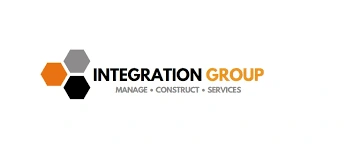AI in Design and Construction: From Concept to Completion
Artificial Intelligence (AI) is rapidly reshaping the design and construction landscape, offering transformative solutions across planning, risk detection, and design optimisation. Once considered futuristic, AI is now a practical tool embedded in workflows—from early-stage design to post-construction operations. Its ability to process vast datasets, identify patterns, and generate predictive insights is helping firms build smarter, safer, and more sustainably.
Planning with Precision
Traditional construction planning often struggles with fragmented data, reactive decision-making, and inefficient resource allocation. AI addresses these challenges by enabling predictive analytics and real-time optimisation.
For example, Mastt, an Australian AI platform tailored for project owners, automates reporting and risk forecasting across capital works portfolios. On Newcastle Airport’s $250 million terminal upgrade, Mastt replaced manual spreadsheets with live dashboards, reducing reporting time by over 10% and improving visibility across budget and schedule metrics.
Similarly, ALICE Technologies offers AI-powered scheduling simulations that test millions of build sequences. Bouygues Construction used ALICE on the Bagneux metro station in Paris to optimise crew timing and resource allocation, ultimately cutting 140 tonnes of steel from a retaining wall design—lowering both cost and embodied carbon before construction began.
Risk Detection and Mitigation
AI excels at identifying risks early, often before they’re visible to human teams. By analysing historical data, weather patterns, terrain conditions, and real-time site inputs, AI systems can flag potential hazards and suggest mitigation strategies.
Smartvid.io is a standout example. Its AI platform scans site photos and videos to detect unsafe behaviours and compliance issues. By proactively identifying risks, Smartvid.io helps firms reduce accidents and improve safety culture.
STRABAG SE, a European construction giant, integrates OpenAI models to forecast project delays and assess preconstruction risks. These predictive insights allow bid teams to refine proposals and avoid costly surprises.
Design Optimisation and Generative Intelligence
AI’s impact on design is perhaps the most revolutionary. Generative design tools use deep learning to explore thousands of design permutations based on parameters like cost, sustainability, and spatial efficiency. Rather than refining existing ideas, AI generates entirely new solutions tailored to project goals.
Autodesk’s Construction IQ, for instance, enhances Building Information Modeling (BIM) by identifying design clashes and quality risks before construction begins. Firms using AI-enhanced BIM have reported up to a 45% reduction in design errors and a 30% decrease in rework expenses.
Obayashi Corporation, a Japanese design-build firm, is pioneering generative design and robotics integration. Their AI systems simulate structural responses to environmental conditions, helping teams create resilient, sustainable buildings that meet stringent performance criteria.
Real-World Impact and Future Outlook
The benefits of AI in construction are no longer theoretical—they’re measurable and increasingly indispensable. From cost savings and safety improvements to accelerated timelines and enhanced collaboration, AI is driving a new standard of performance across the industry.
Turner Construction, one of the largest general contractors in the U.S., uses AI-powered sensors and analytics to monitor crane operations and site safety in real time. This proactive approach helps prevent accidents, optimize equipment usage, and reduce downtime. Their integration of predictive analytics has also improved subcontractor coordination, leading to smoother workflows and fewer delays.
Doxel, a California-based startup, leverages computer vision and deep learning to track site progress and productivity. Using autonomous robots and 360-degree cameras, Doxel compares actual site conditions against BIM models and schedules. On one major healthcare project, their system identified a 17% productivity drop early allowing the team to course-correct and save over $300,000 in potential overruns.
Buildots, another standout, equips site managers with helmet-mounted cameras that feed into AI systems. These systems automatically compare captured footage with BIM data to detect deviations, missed tasks, or sequencing errors. On a large residential project in London, Buildots helped reduce weekly reporting time by 50% and improved subcontractor accountability.
Mastt – Real-Time Portfolio Risk Management
Sydney-based startup Mastt is transforming capital works reporting for project owners. Their AI platform replaces manual spreadsheets with live dashboards that track budget, schedule, and risk across entire portfolios. On the Newcastle Airport terminal upgrade, Mastt helped streamline reporting and improve visibility, reducing time spent on manual updates by over 10%. It’s a great example of AI enhancing transparency and decision-making at scale.
FBR Limited – Robotic Bricklaying with AI Precision
Perth-based FBR Limited developed the Hadrian X, a robotic bricklaying system guided by AI and real-time 3D modelling. It can lay up to 1,000 bricks per hour with millimetre precision. The system uses AI to adjust for environmental factors like wind and vibration, making it ideal for large-scale housing projects. FBR has already completed builds in Western Australia and is expanding globally.
BuildAI – Site Progress Tracking with Computer Vision
BuildAI, based in Sydney, uses AI-powered cameras to monitor construction progress in real time. Their system compares live footage against project schedules and BIM models, flagging delays or deviations automatically. On a recent residential tower project in Parramatta, BuildAI helped reduce weekly reporting time by 50% and improved subcontractor accountability—an elegant blend of automation and strategic oversight.
Laing O’Rourke – AI in Prefab and Safety Monitoring
Laing O’Rourke Australia integrates AI into its Digital Engineering workflows, especially in prefab construction. Their use of AI-enhanced BIM and predictive analytics helps optimise module sequencing and logistics. They also deploy AI for safety monitoring, using wearable tech and site sensors to detect fatigue and environmental hazards in real time.
AI for Sustainability and Smart Building Design
Australian firms are also using AI to design smart buildings that respond dynamically to occupancy, temperature, and lighting. AI algorithms analyse real-time sensor data to adjust HVAC systems and lighting, improving energy efficiency. This is particularly relevant in Green Star-rated projects, where sustainability metrics are tightly monitored.
Looking ahead, the AI market in construction is projected to grow from $4.86 billion in 2025 to $22.68 billion by 2032, with a compound annual growth rate of 24.6%. Emerging trends include self-learning digital twins, swarm robotics, and automated design-to-build workflows—technologies that promise to further streamline project delivery and sustainability efforts.
Importantly, AI is becoming more accessible. What was once the domain of large enterprises is now within reach for small and mid-sized contractors, thanks to cloud-based platforms and modular AI tools. This democratization is fostering innovation across the board, enabling even lean teams to harness predictive insights, automate routine tasks, and elevate project outcomes.
For forward-thinking firms, the question is no longer whether to adopt AI, but how to integrate it meaningfully. The most successful implementations focus not just on technology, but on aligning AI with human expertise, project goals, and cultural values
































